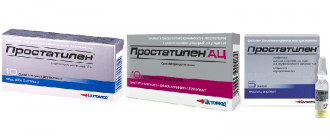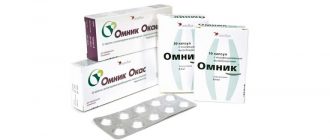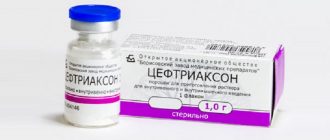Longidaza for prostatitis is prescribed as an adjuvant to enhance the effect of antibiotics. This drug accelerates the regeneration of damaged tissues. Available in two forms, this allows you to choose the course of treatment individually.
Release form and composition
The drug is available in two types:
- rectal suppositories (suppositories);
- injection solution (injections).
Candles
Longidase suppositories for prostatitis contain the substance bovhyaluronidase azoximer 3,000 IU. An auxiliary component is cocoa butter. Available in a cardboard box of 10 pieces.
The candles are oval in shape and light yellow in color. Marbling shade is possible. The aroma of cocoa butter is clearly felt.
Injections
The main active ingredient is bovhyaluronidase azoximer 1,500 IU or 3,000 IU. Excipient: mannitol.
Longidaza injections are a white powder, with a possible yellow or brown tint. Packaged in dark-colored bottles of 3 ml, in cardboard boxes of 5 pieces.
What is better to use
The use of suppositories or Longidaz injections depends on the severity of the disease. In the initial form there are enough candles, and they are easy to use.
If the disease is in the acute stage or has become severe, injections must be used. In this case, the drug enters directly into the blood, which provides a stronger effect.
Injections are also prescribed to those patients who, for some reason, are contraindicated for rectal use of the medicine.
pharmachologic effect
The drug is a long-acting drug. The active substance has the following properties:
- anti-inflammatory;
- decongestant;
- immunomodulatory;
- chelating;
- antioxidant.
The medicine improves tissue permeability, promotes rapid access of antibacterial drugs to diseased cells, but in itself does not affect the causative agent of the disease. Therefore, doctors prescribe Longidaza for prostatitis with an antibiotic, which is selected depending on the causative agent of the disease.
Indications
The drug is used in various fields of medicine: urology, gynecology, surgery, cosmetology, orthopedics, etc. In urology it is used for:
- prostatitis (including chronic);
- Peyronie's disease;
- prostatic hyperplasia;
- after operations on the genitourinary system;
- with narrowing of the urethra and ureters.
Contraindications
Longidaza has a number of contraindications, so it may not be prescribed to all patients. These include:
- individual intolerance or hypersensitivity to the active substance;
- pulmonary hemorrhage;
- acute renal failure;
- oncological diseases.
For patients who have renal failure, the medicine is prescribed with caution.
If the medicine is taken incorrectly or there is an individual intolerance, side effects may appear, most often swelling and itching. In some cases, disturbances in the functioning of the gastrointestinal tract (nausea, vomiting, diarrhea) are observed.
Instructions for use
Longidaza for prostatitis is used both in combination with other medications and as a prophylactic agent. The treatment regimen is prescribed individually, depending on age, severity of the disease and the presence of associated complications.
In case of exacerbation of chronic prostatitis, the drug must be combined with antibiotics to quickly relieve inflammation.
Candles
Longidaza suppositories for chronic prostatitis are recommended to be used in the evening, before bedtime, after defecation. Before administration, you must wash your hands thoroughly and take a lying position. It is not necessary to remove the candle completely from the packaging; it is enough to cut off only the wide edge. Then insert the candle by squeezing. After this, you need to maintain a lying position for 30-40 minutes.
The course of treatment is prescribed by the doctor individually, taking into account the severity of the disease.
Usually it consists of 10-20 candles, the first 10 every day, the next 10 every other day. If it is necessary to repeat the course, a break of at least 3 months is taken.
To prevent prostatitis, you need to use one suppository once a week. Duration of treatment is 3-4 months.
Injections
Longidaz injections for prostatitis are prescribed for more severe disease or in cases where rectal administration is contraindicated for some reason.
Before performing the injection, it is necessary to prepare a solution. The following solvents are used to dilute the powder:
- procaine;
- sodium chloride;
- sterile water for injection.
The injections are intended for intramuscular or subcutaneous administration. Injections should be made in the place closest to the source of inflammation.
The doctor prescribes the dosage and frequency of taking the drug individually. Depending on the severity of the disease, a different interval may be prescribed. In some cases, you need to inject Longidaza for prostatitis every other day, in others, the interval can be from 3 to 10 days.
The course of maintenance therapy can be with a break of 10-14 days.
Analogs
If the patient has contraindications to Longidase, one of the possible analogues is prescribed:
- Ronidaza;
- Lidaza;
- Lidaza-M;
- Vitaprost.
The first three drugs have a similar composition, and Vitaprost has a similar effect.



